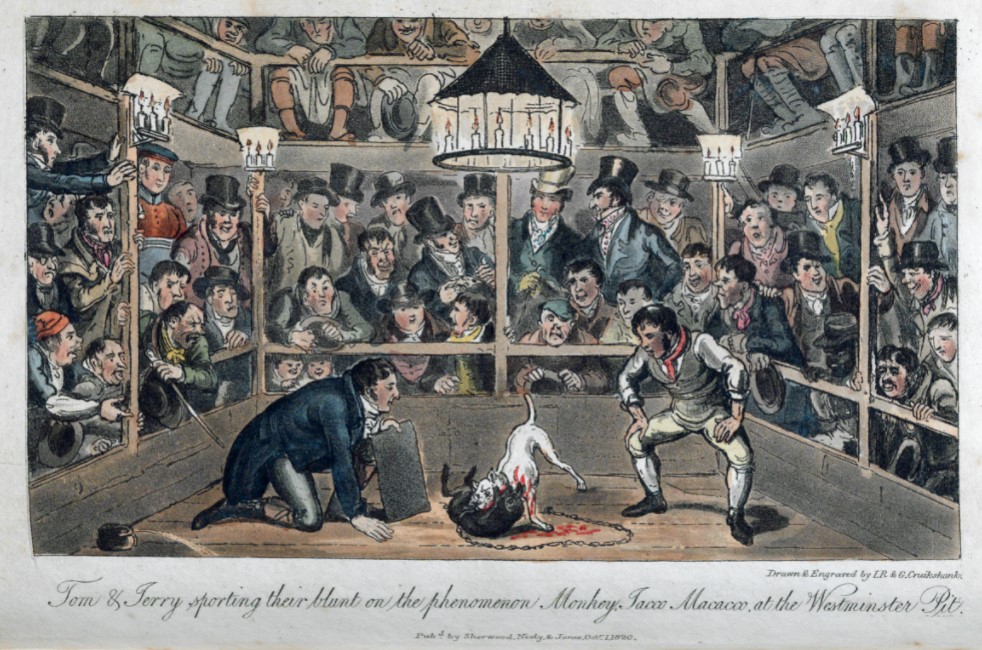CW: Animal Cruelty
Most Regency readers and writers will be well aware of bull, cock and dog fighting that occurred in the Regency era as a popular pastimes for men. However, I wasn’t aware until reading Egan and Cruikshank’s Life in London for my post on the term Corinthian, that in the 1820s a monkey was introduced to the ring.
Jacco Macacco (also spelled Jacko Macauco), was a fighting monkey or game monkey. He was alternatively billed as the Hoxton Ape or Hoxton Monkey.
According to a recount by Lord Lennox in 1860:
Lennox goes on to say that first, Jacco’s fights were viewed by rough customers, but his successes soon made him a high demand fighter attracting “the peer and the pickpocket, the duke and the duffer, the earl and the housebreaker, the country gentleman and the London cadger, the squire and the dog’s meat man.”
Jacco was less than twenty pounds, and often pitted against dogs of similar size.
Lennox goes on to describe his fighting style, food habits, and more.
Other descriptions tell a story of a once gentle pet who suddenly became aggressive and attacked his owner, resulting in being sold.
Animal fighting was not without controversy as shown in this publication:
In fact, this conversation would continue for over a decade at Parliament.

The Westminster Pit was a popular blood sport arena in the 19th century, with peak popularity between 1820-1830. In addition to dog and cock (and monkey) baiting, they also featured bear, badger and rat baiting. The gallery could hold 200 people surrounding a wooden fenced pit where the fighting would take place. This blog goes in to more detail about some of the activities at the Westminster Pit.
Westminster Pit was said to be founded by royals, or at least sanctioned by them:
The Cyclopædia, Or, Universal Dictionary of Arts, Sciences, and Literature (1799)
This was arguably also a hot spot, if an underworld one, as its not mentioned in any of the many London guidebooks from the era.










Am I correct on thinking this would be a sport for men only? That it would be unladylike for a gently born female to attend such an exhibition?
Thanks for the question! As far as I am able to glean from primary resources, it would have been very unusual for a gently born female to attend.